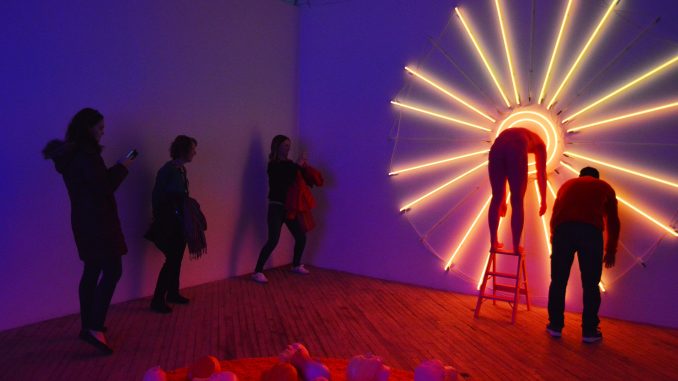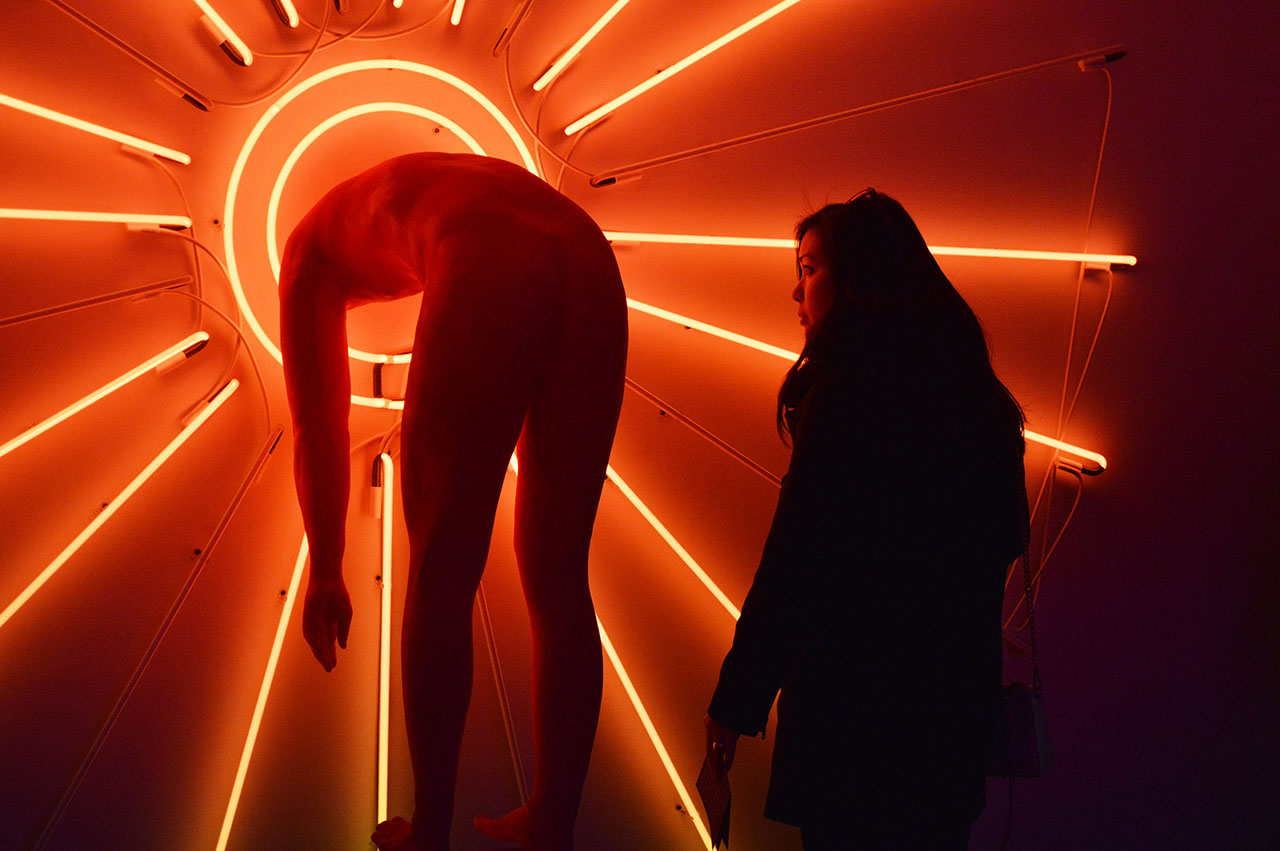
Chad States pushes the limits of lighting and color in his latest exhibit, “La Vie en Rose,” to encourage viewers to detach themselves from reality and become lost in a world of pleasure, joy and hope.
“I advocate this idea of getting lost by becoming free from the outer construction of the self…and connecting more with your inner self,” said States, a 2007 MFA photography alumnus. “For instance, with Trump and the 24-hour news cycle, it is overwhelming, and the need to turn everything off and escape into one’s own fantasy is often necessary.”
“La Vie en Rose” is on display at Vox Populi, an art gallery on 11th Street near Callowhill, until April 22.
The exhibit is named after the 1947 song “La Vie en Rose” by French singer Édith Piaf. Released in the midst of World War II, the song was a metaphor for hope in times of strife. The song became an international hit after it was performed by Jamaican singer Grace Jones in 1977.
States said the song, which translates to “life in pink,” reflects the exhibit’s tone and message.
“‘La Vie en Rose’ essentially means to live with rose-colored glasses…to have the ability to live in a more beautiful version of reality,” States said.
To supplement the exhibit, “La Vie en Rose” by Jones plays on loop, serving as background music for viewers within the space.
“When Jones covered the song, she maintained the romantic, dreamy prospect to it that Piaf included within her piece, but Jones gets a little more fierce in her delivery,” States said. “When I listen to this song, I’m reminded of how it had grown to be a fight song, a song that inspires listeners to fight for their desires of hope or joy, often by escaping into their own headspace.”

Along with the song, visitors are offered a visual experience with three sculptural pieces.
One sculpture, a seven-foot neon sign spelling the phrase “You Deserve It!” shines with alternating blue and orange lights.
“For me, the sign becomes a question of, ‘What does one deserve?’” States said. “Deserve is a term used in marketing a lot. You’re constantly told that you deserve things.”
By placing this piece within his exhibit, States hopes viewers will evaluate whether what they believe they deserve is based on an accurate sense of self.
Across the room, a statue of a man is posed with his head stuck inside an orange neon sun. In the center of the room, a bright orange rug is adorned with 42 severed heads made from fiberglass and painted in pastel colors.
“With the heads, there’s this kind of pleasure,” States said. “They are like candy, except it’s a bit disconcerting that it’s a bunch of severed heads. So simultaneously, the elements of fear and awe sit side by side.”
For States, these pieces represent the idea of escapism.
“Art at its best allows the audience to get lost…so in a way it is escapism, but this escapism has a purpose,” States said. “As getting lost can open up different possibilities in ways of being in the world, it can alter outlooks, alleviate anxiety, provide clarity.”
“On the other hand, it is a double-edged sword as well, since escapism can lead to delusion,” he added. “My work is trying to speak to these paradoxes.”
Timothy Belknap, a 2006 MFA sculpture alumnus, helped States with the exhibit. The two artists have been working on projects together for the past four years.
Belknap fabricated the body and face molds that are included in the exhibit using a mold of States’s body, which took about two months to complete.
The body mold sticking his head into the sun is meant to portray the practice of denial.
“If I think about joy, if I think about happiness, especially now in today’s political climate, I feel like people need to ignore 90 percent of the world to experience these emotions,” States said.
The 42 heads were crafted by pouring wax into the original mold of States’ face.
“Most of the time, when casting someone’s face, their expression looks startled,” Belknap said. “I mean, they’re getting stuff spread across the face, and into their nose, so it’s understandable. But, with the moldable wax, [States] was able to fine-tune the moldings afterwards to rid the faces of their startled expressions.”
Although the same facial mold was used to create the 42 heads, States creates the illusion that each face is adorned with a different expression through the manipulation of lighting and color.
“[States] has always been a really sharp artist,” Belknap said. “His earlier work was much more photogenic, so it’s incredible to see him unpack his narratives in much more sculptural way.”
In his exploration of additional art forms, States encourages his audience to view things from a different perspective.
“There’s clarity to seeing things in a different way,” States said. “The idea of escaping to a dream-like world isn’t about a full sense of denial. It’s about actively creating different possibilities of existing, so it’s a utopian way of looking at our world.”



Be the first to comment